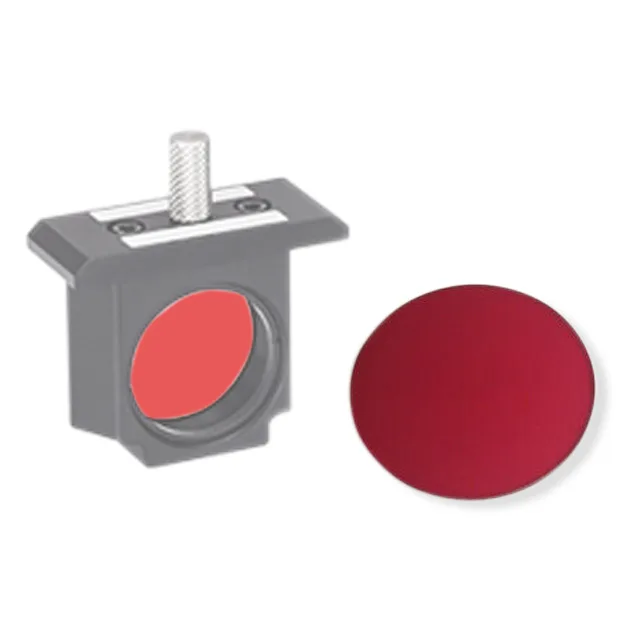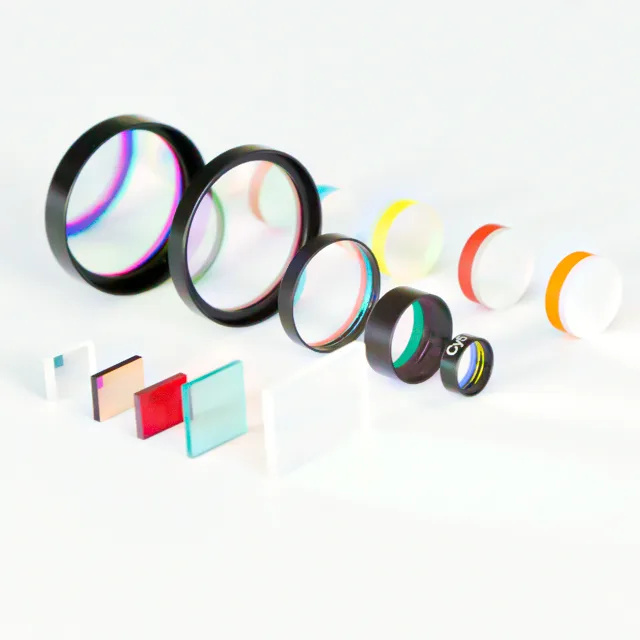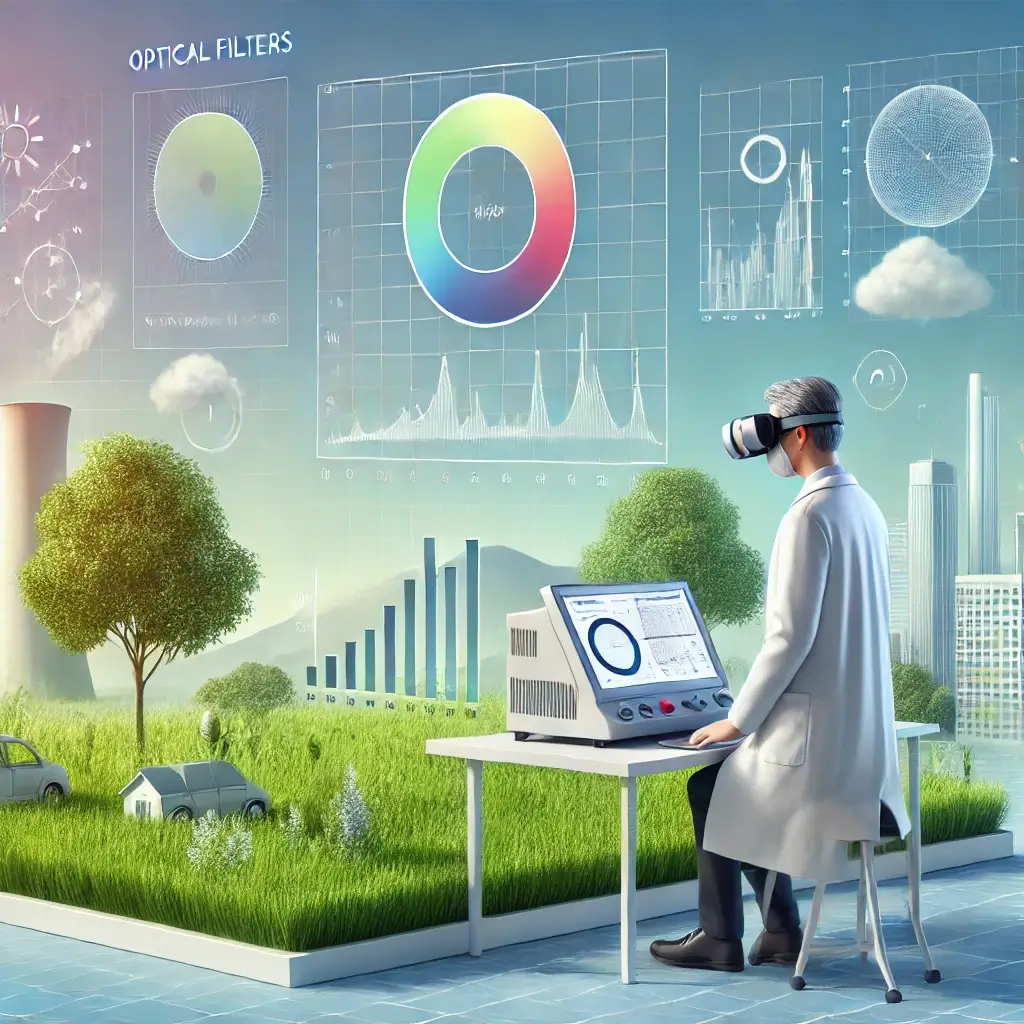Optical filters improve image quality or achieve specific optical effects by controlling the properties of light passing through the lens. Optical filters play an important role in many fields such as medicine, biology, environmental science, photography, and even astronomy.
This article will explore in depth the working principles of optical filters and their specific applications in different devices, especially their use in multiple key areas of life sciences.
What are optical filters?

What is an optical filter? An optical filter is a device that selectively transmits light within a certain range of wavelengths while rejecting light from other wavelengths.
They are made of thin film materials that affect light, such as the amount of light absorbed, reflected, or transmitted, or its degree of polarization. Optical filters can be used for a variety of purposes, mainly including:
- Data collection and analysis: separating specific wavelengths of light for analysis, such as in fluorescence microscopy
- Improving image quality: preventing unwanted light from reaching detectors (such as cameras) to improve signal-to-background ratios
- Enhancing visibility: enhancing the visibility of objects such as stars or planets
- Eye protection: protecting the eyes from harmful radiation such as ultraviolet rays
- Reducing ambient light effects: limiting the spectrum of light receivers to a narrower wavelength range that includes the wavelength of LEDs
In addition to these roles, optical filters also play a large role in life sciences and environmental sciences. Read on to learn about the basic working principles of optical filters and how they play a role in life sciences and environmental sciences.
Basic Working Principles of Optical Filters
The basic principle of how optical filters work is to selectively pass specific wavelengths of light, which can be achieved through absorption, reflection, or transmission. Depending on the desired application, filters can be precisely tailored to fit specific spectral needs.
Absorption Filters: This type of optical filter works by absorbing certain wavelengths of light by the material itself, allowing only other wavelengths of light to pass through. They are often used in scientific experiments and medical devices to ensure that only useful light waves reach the detector.
Reflective Filters: Reflective filters do not absorb light, but instead reflect away unwanted wavelengths, allowing only the desired wavelengths of light to pass through. These filters are often used in high-precision scientific instruments, such as some types of spectrometers.
Bandpass Filters: Bandpass filters allow a specific band of light to pass through while blocking other wavelengths of light. This is critical for applications such as fluorescence microscopy, which requires accurate control of excitation and emission light.
Application of optical filters in life sciences

In the field of life sciences, optical filters are widely used, especially in cell imaging and molecular labeling.
Flow cytometer
The core function of a flow cytometer is to illuminate cells stained with fluorescent markers with light of specific wavelengths and analyze and distinguish the characteristics of cells by detecting the emitted light of different wavelengths.
This technology is extremely important in cancer research, immunology research, and disease diagnosis because it allows scientists to quickly and accurately count and classify large numbers of cells, providing an in-depth understanding of cell types and states.
Microplate reader
Microplate reader monitors and analyzes biochemical reactions by using optical filters to measure the changes in color or brightness caused by enzymes.
The measurement data of these reactions can be used to quantify enzyme activity, which is particularly important in drug development and biochemical experiments because they provide insights into biochemical pathways and drug mechanisms of action.
Nucleic acid detection
During the epidemic, PCR equipment uses specific filters to enhance the visualization of specific DNA markers. Specifically, the excitation filter only allows light of a specific wavelength to irradiate the sample, such as SYBR Green I being excited at 494 nm, while the emission filter only allows fluorescent signals of a specific wavelength to pass, such as an emission wavelength of 520 nm, thereby improving the accuracy and sensitivity of the detection.
For example, when using a FAM-labeled fluorescent probe, the excitation wavelength is set to 485 nm and the emission wavelength is 520 nm. For VIC dye using TaqMan probes, its excitation and emission are set at 528 nm and 554 nm, respectively. This precise wavelength control is achieved by equipping the appropriate optical filters, ensuring that the PCR equipment can effectively distinguish and quantify specific DNA sequences.
Optical Filter Applications in Environmental Science

Optical filters play a key role in environmental monitoring and protection, especially in water quality testing and air quality analysis equipment.
Water Quality Detectors
Water quality detectors use specific filters to analyze the chemical composition and pollutants in water. For example, by measuring the absorption of light at specific wavelengths, the amount of organic matter in a water sample, such as phosphorus and nitrogen, can be identified, which is critical for monitoring water health and pollution levels.
The choice of filters ensures that the equipment only responds to wavelengths of light corresponding to specific pollutants, thereby providing accurate measurements to support effective environmental management and decision-making.
Air Quality Monitors
Atmospheric monitoring equipment uses filters to detect concentrations of specific gases, such as ozone, nitrogen dioxide, and sulfides. By analyzing the specific wavelengths of light absorbed or scattered by these gases, scientists can assess air quality and predict pollution trends.
Optical filters ensure the accuracy of measurements in these instruments, allowing environmental scientists to track pollution sources and develop response strategies.
Opportunities for Optical Filters in Other Fields
Optical filters play a key role in multiple industries, not just scientific research and environmental monitoring. In photography, filters control the light in the camera, helping photographers manage exposure and enhance visual effects, such as using polarizing filters to reduce reflections and capture images of water and windows.
In filmmaking, filters adjust color temperature to create a specific emotional atmosphere. Astronomers use filters to analyze the spectral characteristics of stars and planets to understand their chemical composition and physical state. They also use filters to reduce the impact of urban light pollution and improve the clarity of celestial observations.
Conclusion
Whether in scientific research, environmental monitoring, medical diagnosis, or the art and entertainment industries, the use of optical filters has greatly expanded human vision and detection capabilities.
As technology advances, the precision and application range of optical filters are expected to increase further, providing us with more opportunities to gain insight into natural phenomena and enhance our control over the environment.
If you are still looking for the right optical filter for your application, please visit the official website of OPTOLONG. They offer a variety of optical filters and provide relevant customized services. Contact us for an accurate quote!
Related reading: What is a Beam Splitter
